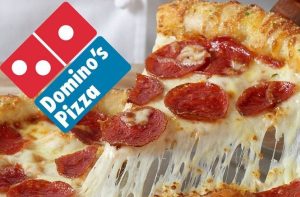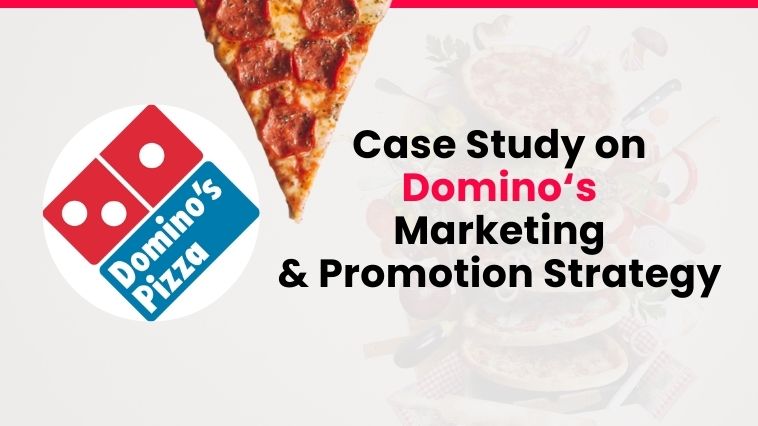One of the most amazing businesses of the twenty-first century is Domino’s. Most of us know Domino’s only because of its 30-minute free delivery policy. Very few of us know that from 2010 to 2017. Domino’s stock has performed so well that its price has increased by 2000%. And it has outperformed even giant companies like Amazon, Apple, Netflix, and even Alphabet. This meteoric stock rise was neither a bubble nor a billionaire tweeting about it. Instead, it was a result of one of the most strategic, calculative, and perhaps the boldest moves made in corporate history. The question is What exactly was this strategy and more importantly, how can entrepreneurs like you and me apply this to our company? This is a story that dates back to 2009 when the brand image of Domino’s was completely down the drain. The stock was selling at a rock bottom price of just $6 per
share, the store sales were going down drastically and Domino’s ranked last in the consumer brand preference survey. All of these things made it very very clear that Domino’s was failing real bad. This is when the CEO of the company back then, Patrick Doyle decided to take a closer look at the situation soon enough they found out that multiple blog posts were saying how bad their pizzas were; some of them said that the crust of the pizza tasted like cardboard. while the others said that the sauce tasted like ketchup. This was followed by a series of social media posts that consistently appeared online.
Now, if you take a step back and try to understand the situation; the situation is very very delicate. The stock price of Domino’s was already hitting rock bottom, the American economy was still recovering from the 2008 crisis. And during this time Domino’s, as a publicly listed company was already walking on a very very tightrope. Now in this case, what any normal company would do is they would engage in great PR, make sure that all the bad reviews are overshadowed, and then, in the background they make a few changes and maybe even give out free pizzas, just to get positive reviews. Or worst case, they would just ignore this altogether thinking that after all in 2009 what could a blog do to a billion-dollar company? But you know what? Domino’s opted for the most lethal in advertising that nobody ever dares to use, especially when the company is failing. And this was pure honesty. Patric Doyle, CEO of the company took full responsibility of what was happening and they publically admitted that they were not doing a good job.
In fact, they called upon actually disappointed customers and got them to taste the pizzas to give them feedback. And it was perhaps the most difficult day at work because every person who walked in just put out some brutal phrases and told them how pathetic their pizzas were.The team of Domino’s listened to them very very patiently and took notes diligently. what followed next was nothing short of an adventure. For the next 18 months every single chef of Domino’s worked day in and day out without taking a weekend off, just to try every possible combination of ingredients to make the best pizzas they possibly can. They changed their pizzas from top to bottom. And in the process of experimentation, they also realized the fact that in the race to actually provide customers with 30-minute delivery the company’s supply chain itself was compromised.

Restructuring of the Supply Chain and Marketing
The majority of its ingredients were frozen, canned, and even pre-made just so that they could cut down on cost and make it easier to assemble a pizza in record time. So the chefs and the management got together and changed the entire supply chain of the company. Now, this was an extraordinary move because we are looking at a complete revamp of processing,
inventory, storage, and transportation that is going to be executed to a chain of more than 4200 stores. which are spread across 9.93 million square kilometers, which is practically 3 times the size of India. To everyone’s surprise, they managed to pull it off within just 18 months. Guess what? On top of that, they launched a campaign called the ‘ Oh yes we did’ campaign. wherein they documented their entire journey of how they went from making terrible pizzas to making the best pizzas in the United States.
In fact, there is also a very sweet video online wherein the head chefs of Domino’s personally go to the houses of their harshest critics and surprise them with their new pizza wherein they had incorporated all of their feedback and each one of these critics was mind blown that the head chef of Domino’s himself had come down to deliver pizzas. They tasted the pizzas, they loved it and they were smiling and most of them couldn’t even believe that such a huge company would actually take their feedback so seriously. Apart from this they also included a special section in the website. wherein they posted Facebook posts and tweets of the customers who expressed their delight after having the new pizzas. This is how Domino’s reinvented itself and did everything in its capacity to get back to making the best pizzas in the United States. And the results? Well, while the pizza delivery business itself saw a decline of 3% the same-store sales of Domino’s increased by 14.3%.which is the largest quarterly increase in fast food history. The Domino’s stock rose by 44% in just one month following the campaign. And by the end of the quarter, the stock had reached a 75% increase. The campaign has earned 2 billion free media impressions to date and the stock price just kept going and going for 7 years and rose by 2000%, outperforming Apple, Amazon, and Netflix.
This is how Domino’s set a benchmark for other brands to learn how to embrace criticism and how to turn it into a business opportunity. Now, there are 3 very important lessons that we need to learn from this case study.
Lesson 1, customer criticism is a part of the business although sometimes there might be meaningless hate, as a business owner it is your responsibility to filter through the chaos and identify the weakness before it paralyzes your business. In this case, the CEO could have easily ignored the blogs but because he decided to fix it, Domino’s still exists.
Lesson 2, the cost of rectifying a mistake is always far less than paying the price for it when it’s already too late.
How Domino’s Leveraged Storytelling and Customer Connection
If Domino’s had considered revamping the supply chain to be a million-dollar expense it would have cost them their entire business but because they saw it as a million-dollar investment it gave them the opportunity to rise from their ashes. And last and most importantly every brand needs to realize that the future of marketing is not about discounts and fancy packaging. Although they are important, at the end of the day the brand needs to connect with its customers at a personal level and thanks to social media it has become more easier now than ever. The moment the customers realize that they are a part of your journey and the fact that their contribution actually matters you will go on to achieve an extraordinary level of brand loyalty which is by far the most powerful asset that you could possess as a brand.And the best way to actually establish this connection would be to tell a beautiful story. In this case, it was the ‘Oh yes we did’ campaign. Meanwhile, if you also want to learn how to tell powerful stories.To learn more about how we can help you accomplish your marketing objectives, get in touch with us at iSale Digital



